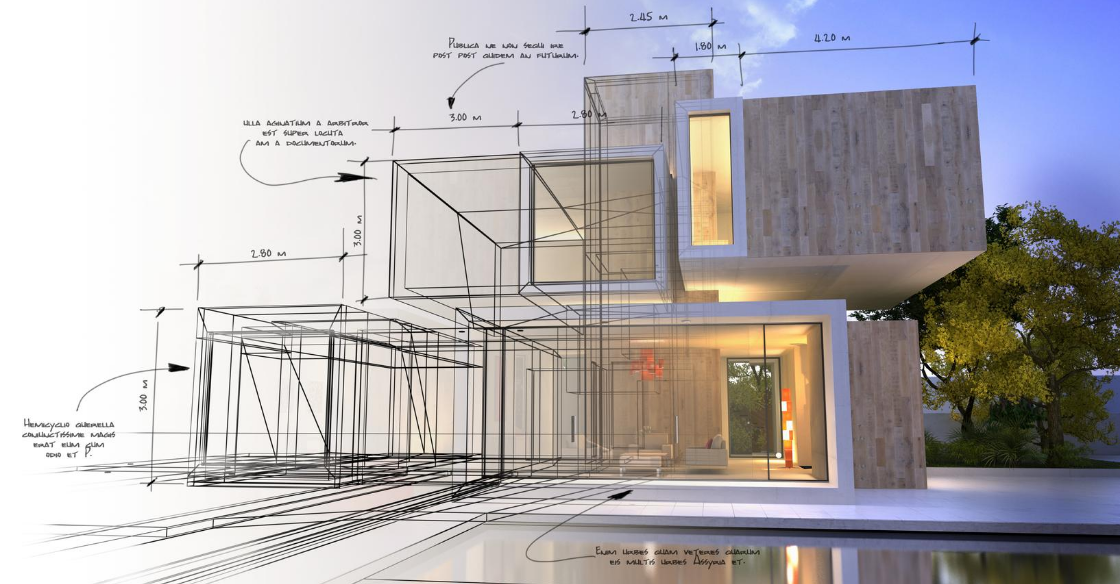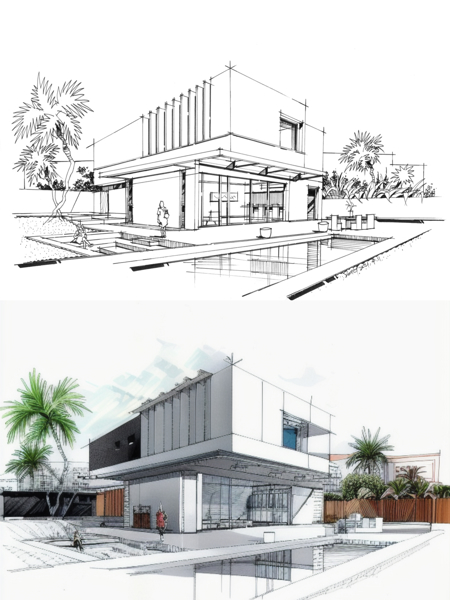Discover Innovative Styles with Leading CDA Architects for Your Next Project
An Extensive Summary of Building Styles and Their Impact on Modern City Preparation and Advancement
Architectural styles have actually long acted as a mirror to the societal values and technical innovations of their time, playing an important role fit modern city planning and development. From the grandeur of Neoclassicism to the practical technique of Brutalism, each style has introduced distinct principles that influence urban appearances and performance. As contemporary difficulties emerge, including sustainability and area requirements, understanding these historical frameworks comes to be important. The resulting dialogue not just notifies future layout practices but likewise increases significant concerns concerning the equilibrium between heritage and innovation in our progressing urban landscapes.

Historical Review of Building Styles
Throughout history, building styles have evolved in response to social, technological, and ecological elements. Each period shows the prevailing values, ideas, and innovations of its time, leading to a rich tapestry of style that indicates human imagination and adaptation. The ancient worlds, such as the Egyptians and Greeks, established fundamental styles that stressed proportion and proportion, serving both useful and visual functions.
As cultures transitioned via the Middle Ages, Gothic design emerged, identified by its verticality and elaborate detailing, mirroring the spiritual aspirations of the era. The Renaissance noted a rebirth of timeless ideals, combining art and design in innovative methods that affected succeeding styles across Europe.
The Industrial Transformation presented brand-new materials and construction techniques, motivating activities like Modernism, which challenged typical kinds and accepted simpleness and functionality. The 20th century saw a diversity of designs, with Postmodernism reacting versus the plain minimalism of its precursor, including historical references and diverse aspects.
Today, architectural designs proceed to evolve, driven by globalization and sustainability worries, reflecting a dynamic interaction in between heritage and development (cda architects). This historical summary underscores the importance of style as a mirror of social evolution and as a driver for city development
Trick Architectural Styles Explained
The variety of architectural designs reflects the myriad influences that shape our developed environment, each personifying unique characteristics and social values. Secret architectural styles consist of Timeless, Gothic, Baroque, Innovation, and Postmodernism, each representing distinct historic contexts and visual ideologies.
Classical style, rooted in old Greece and Rome, stresses balance, proportion, and making use of columns. On the other hand, Gothic architecture, thriving in the Center Ages, is identified by sharp arcs, ribbed safes, and flying buttresses, developing an angelic high quality in sanctuaries. Baroque style, emerging in the 17th century, is noted by splendour, fancy ornamentation, and a vibrant interaction of light and shadow.
Modernism, which acquired momentum in the early 20th century, focuses on feature over form, making use of new products like steel and glass to develop minimalist structures. Postmodernism, reacting versus the austerity of Modernism, welcomes eclecticism and historical reference, usually integrating playful aspects and paradox.
Understanding these designs gives understanding right into the cultural narratives and technical innovations of their respective periods, highlighting exactly how design offers not simply as a shelter, however as a representation of societal worths and desires.
Influence on Urban Preparation
In shaping the advancement of cities, building designs considerably affect urban preparation decisions. The option of building design commonly dictates the aesthetic appeals, functionality, and general character of urban read review environments. cda architects. For circumstances, innovation, with its emphasis on minimalism and performance, motivates open rooms and the integration of modern technology, shaping city designs that prioritize performance and access. Conversely, standard styles may emphasize historical conservation, resulting in metropolitan styles that maintain cultural heritage and promote pedestrian-friendly environments.
Furthermore, architectural designs can impact zoning regulations and land utilize policies. Urban organizers need to take into consideration the prevailing architectural fads when designing areas, making sure that new growths harmonize with existing structures. This consideration cultivates cohesive metropolitan useful content landscapes and improves community identification.
The implementation of particular architectural styles can likewise affect socioeconomic aspects within a city. For instance, premium modern styles might bring in wealthy homeowners and services, resulting in gentrification, while more inexpensive real estate remedies could prioritize practical and sustainable styles to accommodate diverse populaces. Inevitably, the interplay in between architectural designs and city planning creates dynamic cities that reflect both historic context and contemporary requirements, forming the lived experiences of their citizens.
Sustainability and Modern Style

Contemporary building activities, such as biophilic layout and green architecture, supporter for structures that integrate with their surroundings, utilizing all-natural materials and promoting biodiversity. These styles typically incorporate renewable resource sources, such as photovoltaic panels and wind generators, to reduce dependence on fossil gas and lower carbon footprints.
Additionally, the combination of advanced innovations, such as smart building systems, boosts energy monitoring, enhancing resource usage while ensuring owner convenience. Ingenious water monitoring approaches, consisting of rain harvesting and greywater recycling, more add to sustainable metropolitan settings.
Especially, sustainability extends past environmental concerns; it incorporates social and economic dimensions also. By fostering neighborhood health and promoting inclusivity, modern-day building designs align with lasting development goals. As a result, the development of architectural techniques remains to form resistant cities that not just fulfill why not check here the requirements of the existing yet likewise guard the future for generations ahead.
Neighborhood Engagement in Design
Community engagement in style offers as an important bridge between engineers and the populaces they offer, guaranteeing that the built setting mirrors the demands and goals of its users. This collective process welcomes neighborhood participants to contribute their understandings and choices, fostering a feeling of possession and obligation towards the areas they live in.
Efficient community involvement employs numerous techniques, such as workshops, surveys, and public discussion forums, to collect diverse perspectives. These approaches facilitate a two-way dialogue, allowing architects to comprehend neighborhood contexts while encouraging citizens to articulate their concerns and desires. This inclusivity not only improves the design top quality however additionally advertises social equity by attending to the one-of-a-kind difficulties encountered by marginalized groups.
Additionally, neighborhood involvement can result in ingenious solutions that might not arise in a conventional layout process. By integrating local expertise and cultural values, architects can create spaces that reverberate more deeply with users, improving usability and sustainability. Inevitably, prioritizing area interaction in style processes causes environments that nurture social interactions, assistance health, and reinforce neighborhood ties, thus playing a critical function in forming contemporary metropolitan landscapes.
Conclusion
Architectural styles have profoundly affected modern city preparation and growth, mirroring progressing cultural and technological contexts. The combination of historical aesthetics with modern needs fosters metropolitan environments that focus on sustainability and area involvement. As cities remain to grow and adjust, the ongoing discussion between architectural heritage and contemporary style concepts will remain crucial in developing inclusive, dynamic rooms that improve lifestyle and advertise social equity. The future of metropolitan development joints on this harmonious balance.